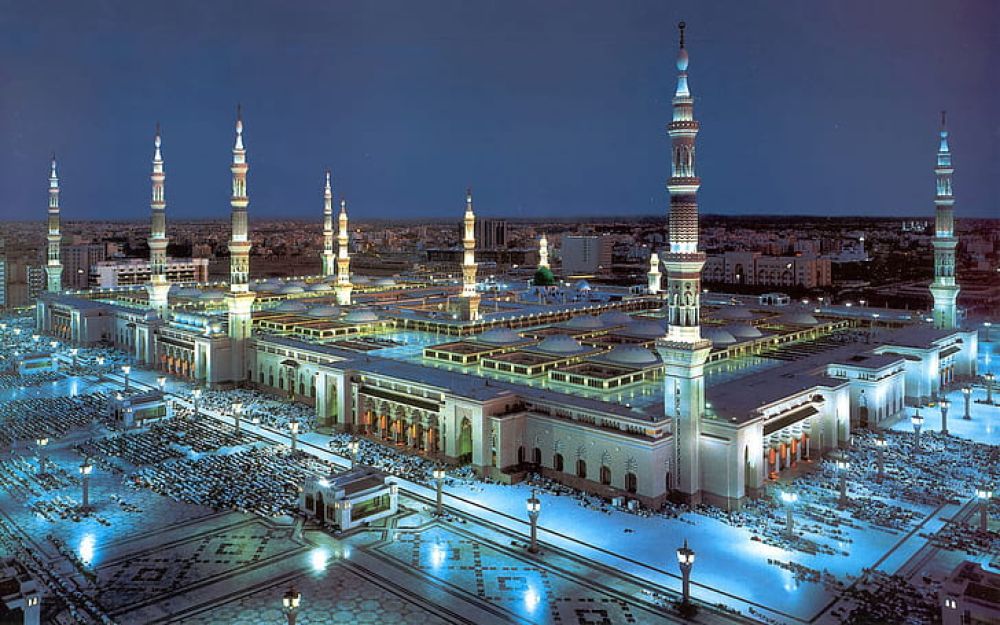

Al-Masjid an-Nabawi, also known as the Prophet's Mosque, is one of the holiest sites in Islam. Its significance dates back to the 7th century when it was established by the Prophet Muhammad himself, shortly after his migration to Medina in 622 CE. The mosque has been a central place of worship and an important pilgrimage destination since then, especially as it is the final resting place of Prophet Muhammad.
Over the centuries, Al-Masjid an-Nabawi has seen numerous expansions and renovations to accommodate the growing number of pilgrims. The Ottoman Empire and succeeding Saudi rulers have all contributed to its development. The modern era saw a significant increase in visitors with the advent of improved transportation and accommodation infrastructure.
Today, Al-Masjid an-Nabawi is surrounded by a vast plaza, with numerous hotels and services catering to the needs of pilgrims. It features state-of-the-art facilities, making it more accessible to Muslims from around the world. The mosque's capacity has risen significantly, allowing for millions of worshippers during peak seasons such as the Hajj and Ramadan.
The latest trend in tourism at Al-Masjid an-Nabawi is the focus on enhancing visitor experiences through technology and sustainability. The Saudi government has initiated the Vision 2030 plan, which includes significant investments in tourism and aims to increase the annual number of pilgrims. Advanced crowd management systems, mobile apps offering multilingual guides and spiritual support, as well as initiatives to make the mosque and its surroundings eco-friendly are part of this trend.
Visitors to Al-Masjid an-Nabawi are expected to observe Islamic customs and dress codes. Non-Muslims are not permitted to enter the central prayer halls, but they can explore certain areas of the compound and admire the mosque's stunning architecture and tranquil ambiance. The most notable features of the mosque include the Green Dome under which the Prophet Muhammad is buried, the Riyadhul Jannah (Garden of Paradise), and the Rawdah, which is particularly revered.
Al-Masjid an-Nabawi in Medina continues to be a beacon of Islamic faith and spirituality. Its rich history and modern advancements contribute to a unique and deeply significant tourism experience for Muslims across the globe. As tourism trends evolve, Al-Masjid an-Nabawi remains a testament to the enduring legacy of Islam and its message of peace and unity.